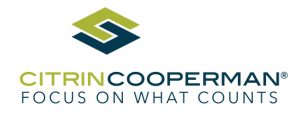As part of the Coronavirus Aid, Relief and Economic Security Act (CARES Act), the Federal Government created the Provider Relief Fund (“PRF” or “funds”) to provide much needed financial assistance to healthcare providers during the COVID-19 pandemic. Congress appropriated $175 billion to this fund, to be administered by the Department of Health and Human Services (“HHS”). To date, nearly $100 billion has been obligated or disbursed through several distributions.
Healthcare providers that receive this funding must attest to eligibility terms and conditions, certifying that they are eligible for each of the distributions they receive. The funds will be subject to significant oversight and scrutiny. The ever-changing guidance around the conditions attached to the distribution and use of the funds has created a multitude of concerns for recipients.
Use of PRF Funds
Per the HHS terms and conditions of the PRF funds, the funds may only be used to “prevent, prepare for, and respond to coronavirus” and “shall reimburse the recipient only for health care-related expenses or lost revenues that are attributable to coronavirus.” The clear and obvious use of the funds would be costs directly associated with the COVID-19 response (personal protective equipment purchases, additional cleaning costs, temporary staffing, etc.).
Click here to read more content from Citrin Cooperman
Many healthcare providers have not had enough eligible expenses within the eligible period to utilize all their PRF funding. Therefore, there has been an enhanced need to consider the “lost revenue” category of utilizing the funds, which falls under “prevent, prepare for, and respond to coronavirus.” Providers will need to estimate revenue losses due to the COVID-19 pandemic by using any reasonable method to make the estimation. HHS has recommended two methods: comparing current year to the prior year or comparing the current year to budget. Based on this calculation, per HHS guidance, providers may use their PRF distributions to “cover any cost that the lost revenue otherwise would have covered, so long as that cost prevents, prepares for, or responds to coronavirus.”
Further Considerations and Complexities
Since HHS defines any patient as a “possible” COVID-19 patient, there may be an opportunity to use these funds more broadly. As an example, it is unclear whether providers can allocate routine expenses to the PRF, such as increases in unit costs for surge pricing, or whether it may only use the funds to cover increased expenses where those increases are attributable to coronavirus.
Further, while PRF funds can be used to reimburse for revenues lost due to COVID-19, just because a provider can substantiate a revenue loss, does not mean it can spend the money on whatever it chooses. HHS has not clarified the issue for some providers whose revenue, while diminished, still exceeds expenses. In this circumstance, it is unclear whether HHS would still permit providers to use the PRF money to cover costs that the lost revenue otherwise would have covered because, in this scenario, the PRF money would be replacing lost profitability, rather than lost revenue.
Preparing for Audit Oversight
Providers will be required to provide justification and support for each expenditure and how it helped prevent, prepare for, and/or respond to the coronavirus. Therefore, an important first step is to ensure internal controls are documented, showing management and internal oversight of the use of the funds. Providers should also maintain detailed documentation of the distributions received and how the funds were utilized. To help in this justification the following items should be retained: bank statements, general ledger details, internal financial statements, invoices for supply and other costs, proof of patient care, and a detailed lost revenue calculation.
Reports are required to be submitted using a specific form expected to be released by HHS on August 17, 2020. These reports will allow providers to demonstrate compliance with the terms and conditions attested to, including the use of the funds for allowable purposes. The reporting system will become available to recipients for reporting on October 1, 2020. Recipients who expended funds in full prior to December 31, 2020 may submit a single final report at any time during the window that begins October 1, 2020, but no later than February 15, 2021. Recipients with funds unexpended after December 31, 2020 must submit a second and final report no later than July 31, 2021.
There are many complexities and considerations when determining the eligible uses of the PRF funds. To help navigate through the challenges of these funds and other COVID-19 issues, Citrin Cooperman has developed the COVID-19 Response Unit, a resource center with critical updates on legislative developments, tax alerts, business guidance articles, webinars, and more.

Citrin Cooperman is a nationally recognized, full-service CPA firm, currently ranked in the U.S. top 25, with a dedicated Healthcare Practice. The firm offers assurance, tax, and business advisory services to help clients remain competitive in today’s market.
Amber Aubin is a director in Citrin Cooperman’s Providence office, with over seven years of experience working with clients in the healthcare industry, including skilled nursing facilities, assisted living facilities, and Federally Qualified Health Centers (FQHC).
 10 Weybosset Street, Suite 700 | Providence, RI 02903 | 401-421-4800 | citrincooperman.com
10 Weybosset Street, Suite 700 | Providence, RI 02903 | 401-421-4800 | citrincooperman.com










